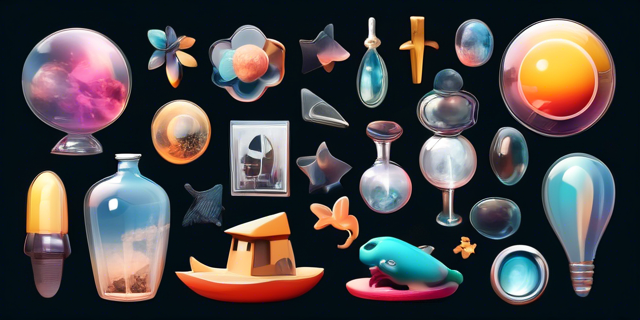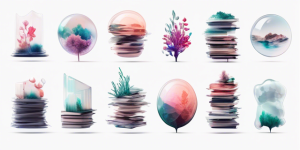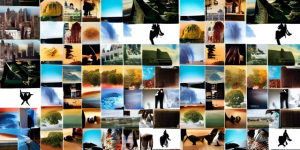Introduction
Welcome to the vibrant world of Papua New Guinea (PNG) art—a mesmerizing realm where ancient traditions meet modern expressions. PNG art isn’t just decoration; it’s a profound storytelling medium, deeply woven into the fabric of everyday life and spiritual beliefs of the indigenous communities. From elaborate masks to intricate carvings, each piece holds the whisper of ancestral tales, the spirit of the land, and the rhythmic patterns of tribal dances. Join us as we explore the rich cultural tapestry of PNG through its unique and compelling art forms.
Traditional Papua New Guinea Art
 Image courtesy: Unsplash
Image courtesy: Unsplash
Papua New Guinea (PNG) is a treasure trove of ancient arts, a testament to its diverse culture and rich history. Traditional art in PNG is not only visually striking but carries profound meanings, embodying the beliefs, values, and stories of its people. The most common forms of traditional art here are wood carvings and woven textiles, each steeped in its own unique heritage and exquisite craftsmanship.
Wood Carvings
In the realm of PNG art, wood carvings stand out as a distinguished form, so ingrained in the culture that they appear almost everywhere—from sacred places to everyday household items. How does one identify a notable wood carving? Look for intricate designs etched into masks, canoes, and totem poles, each telling tales of ancestral spirits and tribal legends. The art of wood carving is passed down through generations, with each tribe imbibing its unique motifs and styles. For example, the Sepik region is renowned for its detailed and expressive masks, which play a central role in initiation ceremonies, enhancing both the spiritual and ceremonial value of these artifacts.
Woven Textiles
Next to wood carvings, woven textiles are a principal art form in PNG. Using natural fibers, often from the bark of trees, artists craft bilums, bags, mats, and traditional attire. What’s fascinating is that each piece is not just an item of use but a canvas showcasing the weaver’s skill and the cultural narratives of their community. These textiles vary greatly from region to region—sharp contrasts in design, technique, and usage. The Huli wigmen, for instance, create elaborate wigs from their hair, a skill they’ve perfected over centuries, representing the power and prowess of the wearer. These textiles are integral to communal life, used in everything from daily tasks to ceremonial occasions, each piece bursting with stories and significance.
Symbolism in PNG Art
Art in Papua New Guinea is laden with symbolism. It’s not just about aesthetics; it digs deep into how the communities perceive and interact with the world around them. The use of colors and patterns in their artwork doesn’t just beautify but communicates messages and upholds traditions that have spanned millennia.
Colors
In PNG art, colors are not randomly chosen—they are loaded with meaning and purpose. Each color used in an artwork encapsulates specific sentiments and tribal beliefs. Red, for instance, often symbolizes war, fierceness, and courage, reflecting the warrior nature of many PNG tribes. Meanwhile, black usually represents the spiritual realm and is widely used in ceremonies and mourning periods. White tends to signify peace, harmony, and mourning as well, marking it as a multifaceted color depending on the context it is used. These colors, vividly painted on faces during tribal dances or intricately dyed in textiles, are crucial for expressing identity and tribal heritage.
Patterns
Just as important as colors are the patterns that adorn PNG art. Patterns are emblematic, each carrying its history, myth, or socially significant meaning. Geometric patterns might signify the landscape—mountains, rivers, and the earth—echoing the tribe’s deep connection to their land. Animal motifs, common in coastal area carvings, symbolize creatures important to tribal folklore or essential for survival. In patterns, we often see a narrative unfold, one that guides the community’s values and traditions. For instance, the ‘crocodile scale’ pattern, predominant among the Sepik River communities, reflects the importance of the crocodile as both a totemic spirit and a vital source of food and materials.
Art in PNG is a vibrant testament to the rich and complex tapestry of life that has evolved on this immense island. Its traditional art forms—whether carved from wood or woven from thread—tell a story that goes beyond mere decoration, they narrate the life and soul of Papua New Guinea.
Influence of Culture on PNG Art
Papua New Guinea (PNG) is a vibrant tapestry of cultural expressions, made unmistakably rich by its diversity of over 800 tribes, each contributing to the multicolored mosaic of its art. PNG art isn’t just an aesthetic delight but also a profound cultural communicator, illustrating the deeply integrated way of life, beliefs, and historical narratives of its people. This art forms a bridge between past, present, and future generations, showcasing the dynamism and evolving nature of indigenous cultures.
Indigenous Communities
In PNG, each community produces its unique form of art which serves as an identifiable signature. From the Huli wigmen’s flamboyant headdresses to the Sepik River people’s intricate wood carvings, these varied forms are steeped in communal history and function. For instance, the Asaro Mudmen are renowned for their eerie mud masks, which they use in tribal rituals and which serve not only as a disguise but also as a portrayal of the spirits they believe in safeguarding their tribe. These artistic expressions are deeply interwoven with each tribe’s identity and survival, from fishing and farming to war and spiritual practices.
Storytelling Through Art
Storytelling is an essential element of PNG culture and is vividly captured through its artistic endeavors. Art in PNG serves as an oral historical record that recounts tribal myths, folklore, successes, and conflicts. Carvings, weavings, and pottery often depict scenes of ancestral spirits, animal totems, and pivotal events that are crucial to tribal lore. For example, the intricate patterns seen in Bilum wearables are not just decorative; each knot and color choice represents a story or a family lineage. This method of storytelling through art ensures that the heritage and traditional wisdom of the communities are passed on and preserved with each new generation, making art a living, breathing diary of the human experience in PNG.
Preservation Efforts and Contemporary Adaptations
 Image courtesy: Unsplash
Image courtesy: Unsplash
As modern pressures threaten to dilute traditional cultures, there’s a growing impetus in PNG to preserve these ancient art forms. However, it’s not just about conservation; it’s equally about evolving these art forms into contemporary platforms while maintaining their cultural integrity.
Conservation of Traditional Techniques
Efforts to conserve PNG’s indigenous art forms are multifaceted, involving local communities, government agencies, and international organizations. Initiatives such as art workshops and festivals encourage young artisans to learn age-old techniques from master craftsmen, ensuring skills are handed down and not forgotten. Museums, both within PNG and globally, play a crucial role in documenting and preserving artifacts that hold cultural significance, aiding educational efforts and increasing global awareness of PNG’s artistic heritage. Additionally, digital archiving has become a modern tool for preserving the records and images of important works, providing wider access and awareness.
Modern Interpretations of PNG Art
Concurrently, there’s a vibrant movement within the country to adapt traditional arts in ways that resonate with today’s global audience. Contemporary PNG artists are experimenting with both new mediums and messages, creating works that address current social issues while drawing on traditional motifs and techniques. For example, Michael Mel, a well-known contemporary artist from the Western Highlands, incorporates traditional symbols into modern media such as installation art and video, to speak on issues such as global warming and Westernization. These modern interpretations open up new dialogues and provide a platform for indigenous voices to reach a broader audience, ensuring the vitality and relevance of PNG art in a global context.
In conclusion, the art of Papua New Guinea is a fascinating reflection of its complex cultural landscape. Through preservation and adaptation, the art continues to evolve, ensuring that the rich cultural heritage of PNG is not only maintained but also celebrated globally.
Conclusion
In the vibrant tapestry of global cultures, the art of Papua New Guinea stands out with its deep connection to tradition and community. Each piece of PNG art isn’t just a visual treat; it’s a story, a ritual, and an inheritance passed down through generations. From the detailed carvings of the Sepik River people to the bold, earthy pigments used by the Highland tribes, each artwork invites us to delve deeper into a rich, ongoing narrative of a people intimately tied to their environment and ancestors. Embracing and supporting this art form not only helps preserve these unique cultural identities but also ensures that such storytelling continues to inspire and educate future generations worldwide. As we conclude our journey into PNG’s art and culture, let us carry forward the respect and admiration these incredible artworks command.






